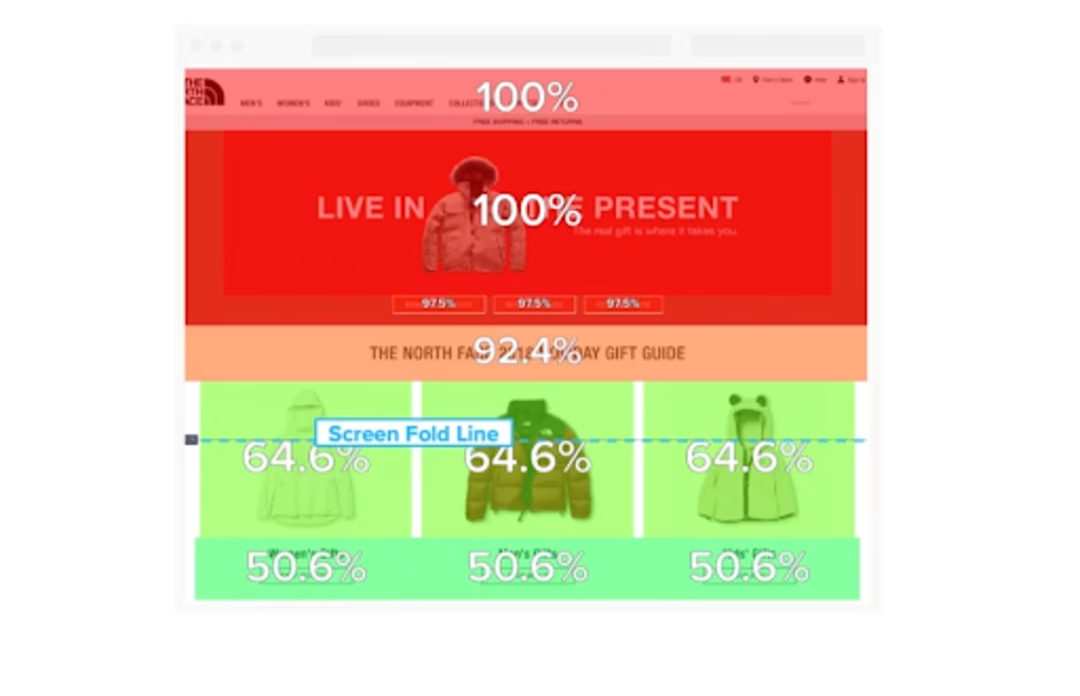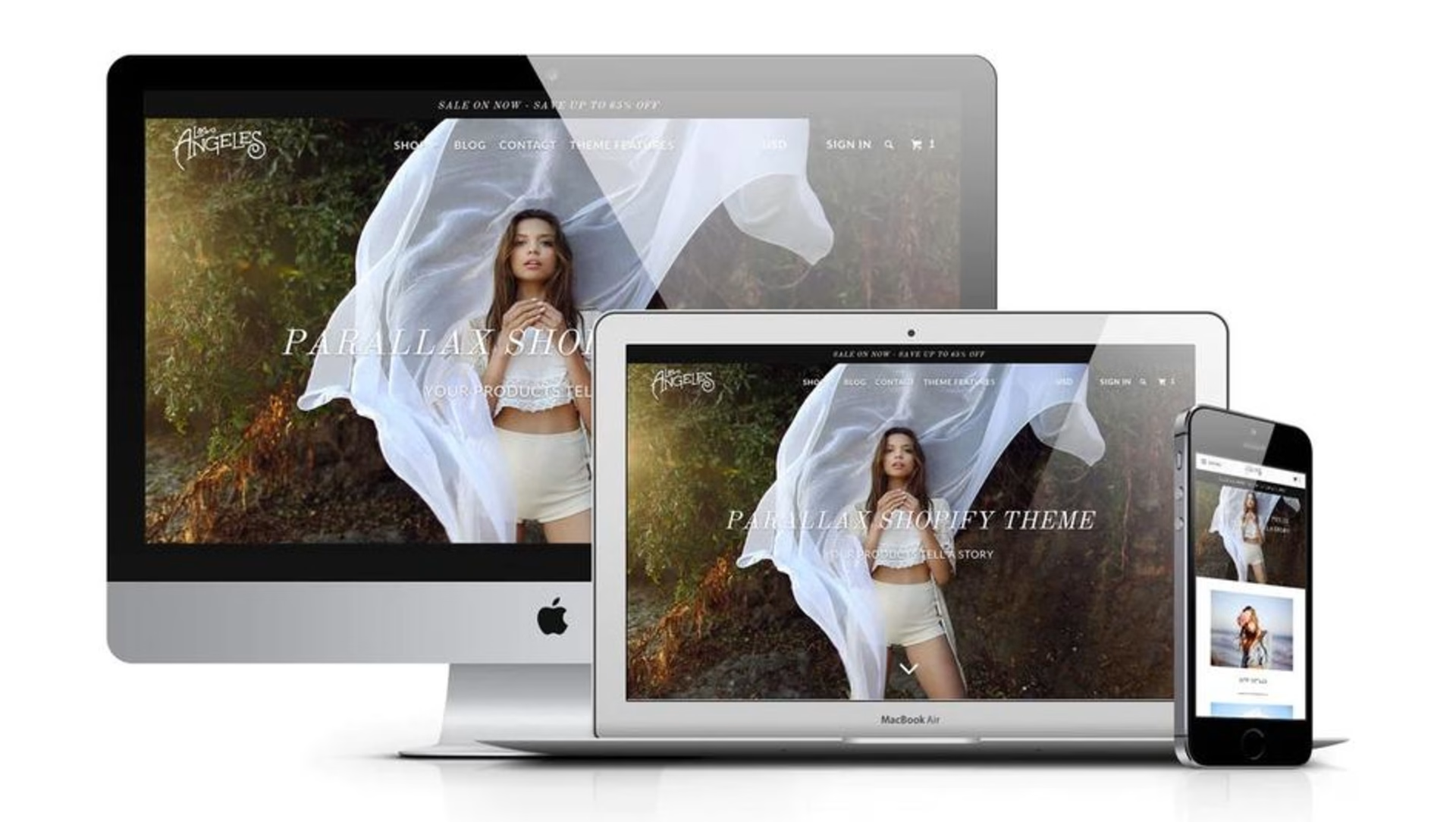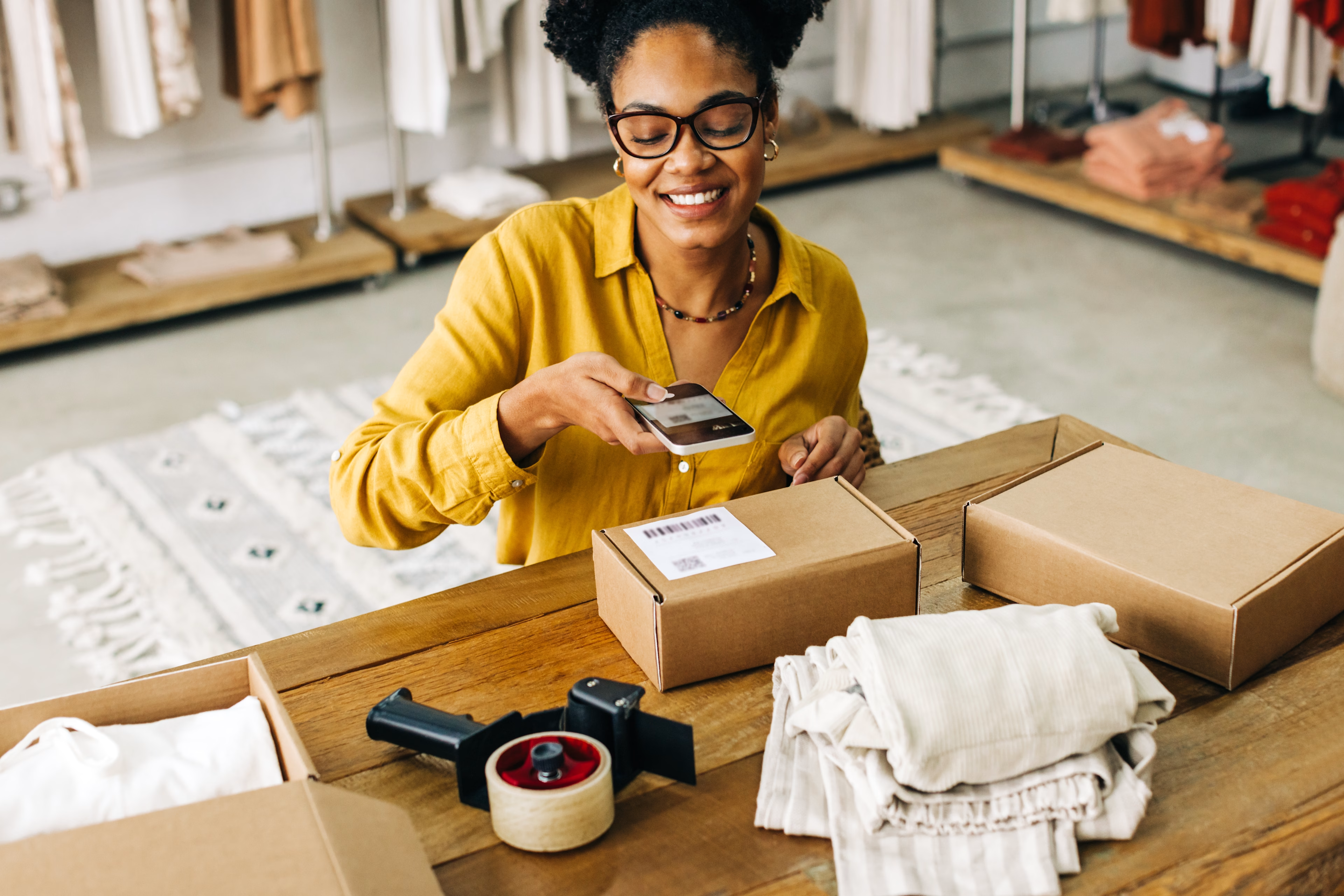The average conversion rate for a Shopify store currently sits at 1.4%. That means almost 99 out of 100 site visitors click away from ecommerce sites without making a purchase.
Conversion rate optimization, or CRO, is the art of encouraging the 99% to cross the finish line.
This article provides 14 actionable tips on optimizing your Shopify store to build trust with users, reduce friction during their journey, and create excitement about buying your product—ultimately boosting your conversion rates through the digital roof.
14 ways to increase your Shopify conversions at every stage of the customer journey
A ‘conversion’ is any action a website owner wants a visitor to take on their site. For some online businesses, a user converts if they sign up for a mailing list, register for an event, or submit a form.
On Shopify stores, however, a conversion usually refers to a sale—increasing your conversion rate is about increasing the number of visitors who turn into buyers.
Minor tweaks to your Shopify store’s user experience (UX) make a huge difference—getting your CRO from 1% to just 2% doubles your sales. The secret to boosting conversions is understanding your users’ behavior so you can create the smoothest and most positive buying experience for them.
Here are 14 tips to help you do just that.
Ensure you’re attracting relevant traffic
How do visitors typically find your Shopify store? If you’re unsure, it’s easy to investigate using Google Analytics. But not all traffic sources are equally profitable. If visitors find you via a viral TikTok, for example, they’re probably more in the mood to scroll than to shop.
Here’s how to attract visitors who intend to convert into customers on your Shopify store:
1. Improve your Shopify store’s search engine optimization (SEO)
SEO is the art of ensuring your website shows up on the results page of Google (and other search engines) when people search for a related term.
To attract relevant traffic to your Shopify store, you need to know which keywords your customers type into search engines to find products like yours, and focus your product pages around these words.
Ecommerce SEO is a huge discipline, but applying basic best practices—like using short and descriptive URLs and writing keyword-led meta descriptions for every page—helps you attract visitors who are looking to buy what you’re selling.
2. Make sure your ads are clear and well-targeted
If you’re using pay-per-click ads of any kind, it’s vital to double-check that they’re being delivered to your target audience. If you’re not totally clear on who that is, use a tool like Contentsquare’s Interviews tool to get to know your customers and create personas by asking your users questions about how they use your product.
![[visual] Run user interviews and unmoderated tests in Contentsquare](http://images.ctfassets.net/gwbpo1m641r7/5TRZhRs0R1KqnCDMf26i0K/e2c6844688c50347fc8435bdf1d2e91f/User-testing-in-Medallia-vs-Contentsquare.jpg?w=3840&q=100&fit=fill&fm=avif)
Use Contentsquare’s Interviews tool to get a sense of who your target audience is—and then optimize for them
A high click-through rate (CTR) is no measure of success unless those clicks are from folks with a need for your product, in the country and language that you serve. After you identify your ideal customer persona, ensure your ads explicitly describe your product. Since social media ads are often measured by CTR, marketers are sometimes led to write juicy, clickable ad copy that prioritizes attracting attention over accurately describing a product.
There’s nothing wrong with a little pizazz, but to bring in relevant traffic, your ads must clearly depict your product and how it can help a customer achieve their goals, or jobs to be done. Great product positioning is all about understanding your customers, and identifying what makes your product uniquely perfect for their needs.
Create a purpose-driven homepage
First impressions are everything—and it only takes 50 milliseconds for a potential customer to form one about your website. Depending on how your customer discovers your product, they might bypass the homepage entirely and land straight on the page of the product they’re interested in.
However, to convert users who do enter through the digital front door, it’s crucial to offer a homepage that builds trust and clearly signposts your offer. Here’s how to do that:
3. Design your homepage around a clear CTA
Your homepage has one job: to direct customers to a product page. To make your homepage conversion-focused, design it around a bold call to action (CTA), which stands out from everything else. Other information, no matter how important, is supporting material.
Keep everything above the fold—in the section of the page that visitors see without scrolling—clean and simple. It might just include a hero image of your best-selling or newly launched product, a headline, and a navigation bar, as well as that all-important CTA. If you want to include a product story or additional information, that’s best left for further down the page when visitors scroll to learn more.
![[Visual] Greats-best-shopify-stores](http://images.ctfassets.net/gwbpo1m641r7/1gTfgiyaboA5g5IPJjWZYq/22629cd4fef7cf1ff73f24a507cde964/Greats-best-shopify-stores.png?w=1920&q=100&fit=fill&fm=avif)
Greats: an ecommerce site with a conversion-focused home page (Source)
📖 Case study: understand how your customers interact with your homepage
To ensure your Shopify homepage is optimized for conversions, you need to understand how visitors actually behave when they get there. Is your CTA really the star of the show? Or are visitors’ cursors hovering for longer over a flashy logo? A tool like heatmaps, which shows you where users click and how far down a page they scroll, helps you reveal unexpected opportunities for ‘quick wins.’
For example, athleticwear giant The North Face used Contentsquare’s scroll heatmap to investigate how far their users typically made it down a page, and which areas caught their attention. Their team discovered that their hero banner, which featured highly attractive category CTAs, was sitting below the fold. With this key finding in mind, they shifted their placement, and voilà—one simple change increased clickthrough rates by 50%.

4. Add a pop-up to ask users why they’re leaving
Close to 99% of visitors who land on ecommerce platforms leave without buying anything. However, just because someone isn’t ready to convert on their first visit, doesn’t mean they never will.
It’s good practice to engage with window shoppers. Many ecommerce sites use a pop-up that appears after a few seconds of browsing, or upon exit when shoppers decide to bounce.
Integrate Contentsquare (that’s us!) with Shopify to directly ask your visitors why they’re leaving empty-handed, using an exit-intent survey pop-up. A short survey reveals whether there’s a particular pain point driving customers away.
![[Visual] Churn survey CSQ](http://images.ctfassets.net/gwbpo1m641r7/16cklE1JBmOUwKxy5zTEqr/c91a8086524022499570708d450187d7/unnamed__40_.png?w=1080&q=100&fit=fill&fm=avif)
Launch an exit-intent survey with Contentsquare in seconds
5. Present your business as legitimate and desirable
The internet is a weird place, so most ecommerce shoppers are always on their toes, alert for scammers. If customers have never heard of your brand, they’ll probably try to learn more before hitting ‘add to cart.’ Your homepage needs to provide reassurance that your business is trustworthy and, where possible, aligns with their lifestyle values.
Add up-to-date contact information to show customers you’re reachable if things go wrong. Include this in the footer of your site to save space in the navigation header. Don’t forget to add an ‘About Us’ section, with information about your brand story and product vision. Demonstrate how your products fit into a wider lifestyle vision, and your visitors are more likely to become paying customers.
Create consistency across your store to encourage users to buy
For the best chance of turning visitors into buyers, you need to remain consistent throughout your Shopify site. A reliable UX and design demonstrate that users can trust your site—and implies you’ll deliver a reliable product. Here’s how to create consistency across your Shopify store:
6. Keep load times fast
Load speed has a huge impact on whether users stay on your site long enough to convert. According to Google, 53% of mobile visitors will leave your site if it takes longer than three seconds to load. There are dozens of Shopify apps to help you increase your conversion rate, but many also slow your store down.
Remove plugins you no longer use, compress all images, and switch off any features of your Shopify theme that visitors aren’t using. Use a tool like Contentsquare’s Speed Analysis tool to analyze the weight of your product pages along with the elements that might be affecting your load speeds. Its detailed reports serve as a springboard to help you prioritize future fixes.

Contentsquare’s Speed Analysis tool helps you enhance your Shopify store’s loading speed and load time
7. Confirm your Shopify shop is mobile-responsive
If your CRO efforts focus on desktop alone, you’re probably neglecting a huge chunk of your visitors. According to Contentsquare’s Digital Experience Benchmark Report, mobile devices accounted for over two-thirds of all website traffic across industries.
It’s essential to keep mobile devices front of mind when making any changes to your site. To check if your website is mobile responsive, just drop your URL into Google’s Lighthouse tool.
Just as with desktop, digital experience analytics helps you understand your users on mobile. In fact, if you’re only viewing experience insights on desktop, you’re missing half the picture. Try Contentsquare’s Heatmaps tool on your mobile pages to ensure all your visuals and CTAs are just as clear and user-friendly on the small screen as the big one.
💡 Pro tip: experiment with an offer banner.
Once you make the essential UX and UI tweaks to improve your users’ experience of your Shopify site, you can explore strategies to excite and delight customers. Banners are a tried-and-tested way to flag up a short-term offer, and encourage users to make a speedy purchase.
There are dozens of apps to create banners available on the Shopify app store. Experiment with offering customers free shipping over a certain spend, a discount on checkout, or even a gift. Whichever you choose, check your banner’s functionality on mobile, and ensure it appears consistently across your Shopify site.

Use a banner to create a sense of urgency, and ensure it’s consistent across different devices (Source)
8. Uphold your brand identity
Depending on your customer’s discovery path, they could land almost anywhere on your site. For example, if they find your product by searching for ‘organic woolen socks’, they might land directly on your product page. If they find you through a query for ‘organic sock company Ohio’, they might land on your About Us page.
Since every page is potentially a shop front, it’s essential to maintain a strong user interface (UI) design throughout. This doesn’t have to be complex—a consistent font, image style, Shopify theme, and color palette go a long way.
Ecommerce websites with a consistent appearance and voice come across as more trustworthy. Strong branding and UI design reassure visitors that you stand for something, and that your products fit into their lifestyle vision. For example, to revisit our organic sock company, the website might market a vision where their consumers buy sustainably produced clothes as a way to take better care of the planet.
Sites with a strong brand identity are also more memorable, increasing your chances that the 98% of visitors who don’t buy from you the first time around might circle back at some point.
Identify where users drop off
Conduct data analysis to find high-exit pages, understand why users are leaving your site, and make improvements to increase sales. Here’s how Shopify store owners can spot and improve key drop-off points on their site:
9. Analyze your most important conversion paths
A typical conversion funnel for a Shopify store would look like this:
Product page > Shopping cart > Checkout page > Thank you page
Look at the micro-conversions between each step of this ecommerce conversion funnel to identify where users drop off instead of moving on to the next step.
Once you’ve pinpointed the web pages that could drive higher conversions, make changes to reduce their bounce rate.
💡Pro tip: use Contentsquare’s Funnel Analysis to understand where and why users drop off your Shopify store.
It lets you visualize the conversion steps on your ecommerce site, and shows you relevant session replays of potential customers who failed to move on to the next stage.
Contentsquare’s Funnel Analysis tool shows you where potential customers drop off
10. A/B test changes you make to your pages
Once you’ve identified underperforming pages, define experiments to improve them.
Conduct a split test between two variants; the current version of the page (control) and a modified version (variant).
Measure the conversion rate of the control versus that of the variant to determine whether your A/B test is a success, and if so, deploy the changes to 100% of the traffic.
💡 Pro tip: Contentsquare integrates with A/B testing tools like Optimizely.
Understand why one variant performed better than the other by analyzing user behavior on each of them.
You can dig even deeper by using the ‘Compare’ feature in Contentsquare’s Funnel Analysis tool to visualize the conversion rates for each step of your funnel and compare the two variants side by side.
11. Spot (and fix) bugs that deteriorate UX on your ecommerce store
When potential customers are unable to perform the actions they want on your site, they’re likely to leave without making a purchase—even if they’d originally intended to.
For instance, one reason you might see a sharp drop in conversions on one of your high-traffic product pages could be that the ‘Add to cart’ button is broken on certain devices.
Removing those website bugs and friction points, and improving your store’s usability, contributes to your Shopify conversion rate optimization efforts.
Use a tool like Contentsquare’s Error Analysis to automate the detection of Javascript and API errors and ensure your website is running smoothly with no pesky broken links that could derail your prospective customers.
Prioritize fixing high-impact errors first and make sure to sort by ‘Sessions with error’ to see just how many users encountered these bugs at any point during their journey on your website.
![[Visual] Contentsquare’s Error Analysis tool](http://images.ctfassets.net/gwbpo1m641r7/6BgodTouv2i9WDLymBFuYa/0d325074a225399a5d6a15d79cb9b5e0/Screenshot_2024-12-29_193928.png?w=3840&q=100&fit=fill&fm=avif)
Use Contentsquare’s Error Analysis tool to detect any bugs that might be disrupting your customers’ journeys
Ensure customers easily find your products
Much of CRO links back to ensuring that visitors who want your product can find it effortlessly. Here’s how to make your product easy to find on your Shopify website:
12. Add intuitive navigation options to your Shopify store
When customers explore your online store via the navigation bar, their options should be obvious. Group your products into 4 to 6 categories, and add any subcategories to a drop-down list. Visitors’ eyes scan your website from left to right, so put your bestselling or most important products on the left.
For example, imagine you’re selling yoga accessories. Your navigation bar might include categories for mats, clothing, props, and training materials, each with a dropdown functionality that offers more granular options like organic yoga mats, colorful yoga mats, and yoga mats with extra grip.
13. Power up your search bar
If you’re aiming to make your product discovery journey easy and intuitive, a search bar is a must-have. Most Shopify themes include one as standard.
Use a plugin that offers intelligent search options to make product suggestions to customers based on what they type in the search bar, whilst checking for synonyms and misspellings. Some apps even let you customize the search results page to flag ‘best-selling’ or ‘low-stock’ products, so you can create a sense of urgency and give visitors a little nudge to buy.
14. Use a cross-selling widget
There are a handful of great Shopify apps that encourage cross- or up-selling. When your customer is on a particular product page, widgets will display an automatically curated selection of related products, often under the subheading, ‘Customers also bought’ or ‘Similar items.’
If your visitor’s first choice wasn’t a great match, using a cross-selling widget can be the difference between a sale and a bounce. Besides increasing conversion rates, cross-selling apps also drive up your average order value.
![[Visual] customers also bought cross-sell](http://images.ctfassets.net/gwbpo1m641r7/6XELapOB8RF2PvQm3Db3BN/40b5714ef4cd51e7fbaf0173784405de/customers_also_bought.jpeg?w=1920&q=100&fit=fill&fm=avif)
Another common cross-sell widget tagline is ‘customers who viewed this also viewed’ (Source)
The art of Shopify CRO: understanding your customers’ needs and meeting them
Conversion rate optimization is all about making your Shopify store a pleasure to use—trustworthy in appearance, fast to load, responsive on mobile, and a smooth checkout experience.
While implementing the best practices above improve the online shopping experience, there’s no clear-cut formula that works for every product and niche.
The surest way to understand how to boost your store’s conversion rate is to monitor your customers’ behavior. Digital experience insights from tools like heatmaps and session replay help you figure out where users get stuck and where they hang around, so you can use that data to find opportunities to nudge them toward buying.

